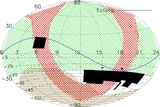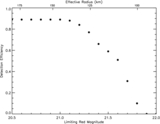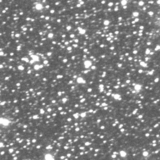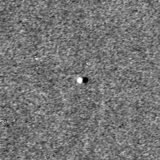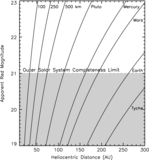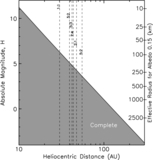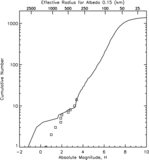Image Details
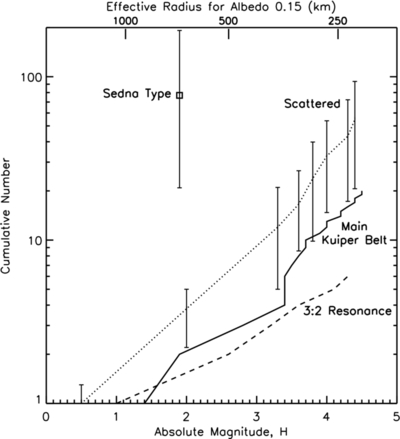
Caption: Figure 11.
Absolute magnitude vs. the cumulative number of objects for the various completeness limits (see Table 4) of the dynamical classes in the Kuiper Belt. The largest few objects have had their absolute magnitudes adjusted as in Figure 8 to account for their higher albedos compared to the smaller objects. The Sedna type (square) and scattered disk objects (dotted line) have significant error bars as these populations are not complete for even the largest objects. Poisson statistics were used to extrapolate the total scattered disk and Sedna populations from the known objects brighter than 21st magnitude using the amount of time the objects would be detectable in their eccentric orbits (Table 4). The scattered population is likely larger than either the main Kuiper Belt (solid line) or the 3:2 resonance population (dashed line). The Sedna type population appears to be the largest of all the populations by a factor of ten or more. The 3:2 resonance population has a shallower size distribution slope ( q = 2.2 ± 0.5) than the other populations ( q = 3.3 ± 0.7).
Copyright and Terms & Conditions
© 2011. The American Astronomical Society. All rights reserved.


